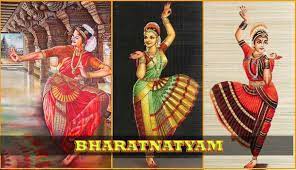Bharatanatyam, rooted in ancient Indian traditions, finds its origins in the Natya Shastra and the temple traditions of devadasis. Despite facing suppression during the colonial era, Bharatanatyam experienced a remarkable resurgence and revival due to the efforts of visionaries like E. Krishna Iyer and Rukmini Devi Arundale.
Bharatnatyam, one of the oldest dance forms of India, has a rich and fascinating history that dates back thousands of years. It originated in the temples and courts of southern India and was nurtured under the Devadasi system, where women dedicated themselves to serving deities as dancers and musicians. The art form was passed down from generation to generation, with the devadasis and male gurus (nattuvanars) being the custodians of this ancient tradition.
Bharatnatyam in Colonial Era
During British colonial rule, classical Indian dance forms, including Bharatnatyam, faced ridicule and discouragement. The colonial authorities associated these dance forms with debased erotic culture and sought to suppress them. In 1910, the Madras Presidency of the British Empire banned temple dancing, which effectively ended the tradition of Bharatnatyam performances in Hindu temples.
Natya Shastra is attributed to the ancient scholar Bharata Muni, and its first complete compilation is dated to between 200 BCE and 200 CE, but estimates vary between 500 BCE and 500 CE. The most studied version of the Natya Shastra text consists of about 6000 verses structured into 36 chapters. The text, states Natalia Lidova, describes the theory of Tāṇḍava dance (Shiva), the theory of rasa, of bhāva, expression, gestures, acting techniques, basic steps, standing postures—all of which are part of Indian classical dances. Dance and performance arts, states this text, are a form of expression of spiritual ideas, virtues and the essence of scriptures.
Historical references to dance are found in the Tamil epics Silappatikaram and Manimegalai (c. 6th century). The ancient text Silappatikaram, includes a story of a dancing girl named Madhavi; it describes the dance training regimen called Arangatrau Kathai of Madhavi in verses 113 through 159. The carvings in Kanchipuram's Shiva temple that have been dated to 6th to 9th century CE suggest dance was a well-developed performance art by about the mid 1st millennium CE. Bharatanatyam is traditionally a team performance art that consists of a solo dancer, accompanied by musicians and one or more singers. It is described as classical art because the theory of musical notes, vocal performance, and the dance movement reflect ideas of the Sanskrit treatise Natya Shastra and other Sanskrit and Tamil texts, such as the Abhinaya Darpana. In modern adaptations, Bharatanatyam dance troupes may involve many dancers who play specific characters in a story, creatively choreographed to ease the interpretation and expand the experience by the audience.







